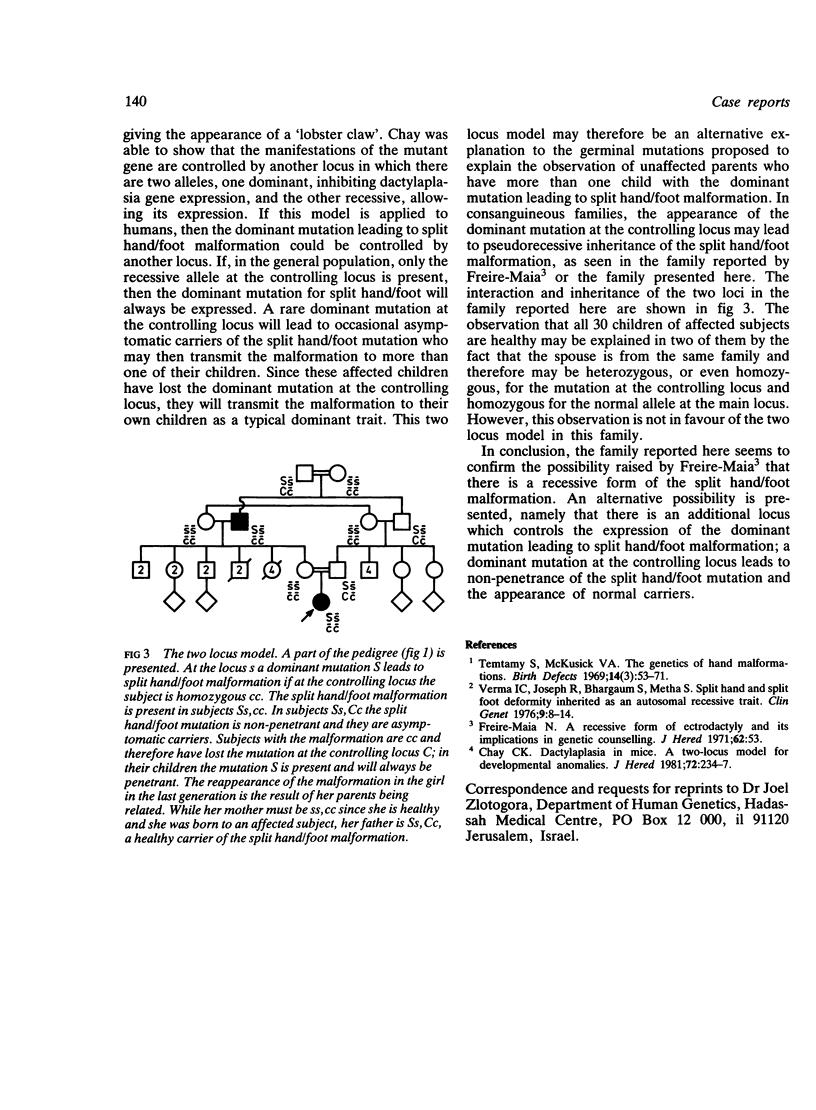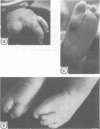Abstract
A family is described in which four subjects in two sibships had typical split hand/foot malformation. The possibility of the existence of a rare autosomal recessive form of the malformation is discussed, as well as a two locus model. In the two locus model the dominant mutation leading to the split hand/foot malformation is controlled by a gene at another locus. A dominant mutation at the controlling locus leads to non-penetrance of the split hand/foot mutation.
Full text
PDF


Images in this article
Selected References
These references are in PubMed. This may not be the complete list of references from this article.
- Chai C. K. Dactylaplasia in mice a two-locus model for development anomalies. J Hered. 1981 Jul-Aug;72(4):234–237. doi: 10.1093/oxfordjournals.jhered.a109486. [DOI] [PubMed] [Google Scholar]
- Freire-Maia A. A recessive form of ectrodactyly, and its implications in genetic counseling. J Hered. 1971 Jan-Feb;62(1):53–53. doi: 10.1093/oxfordjournals.jhered.a108124. [DOI] [PubMed] [Google Scholar]
- Verma I. C., Joseph R., Bhargava S., Mehta S. Split-hand and split-foot deformity inherited as an autosomal recessive trait. Clin Genet. 1976 Jan;9(1):8–14. doi: 10.1111/j.1399-0004.1976.tb01543.x. [DOI] [PubMed] [Google Scholar]



